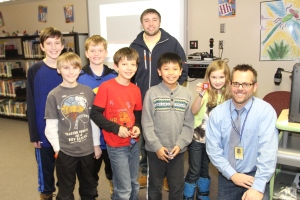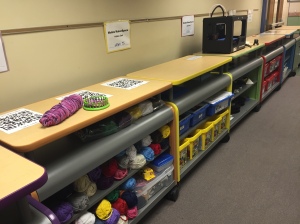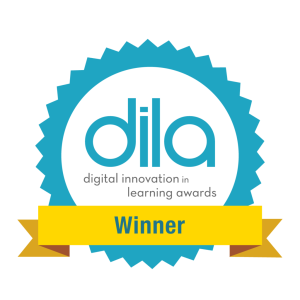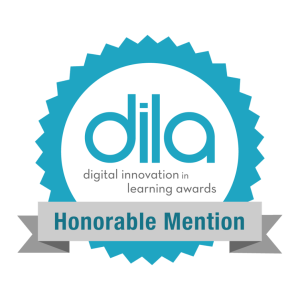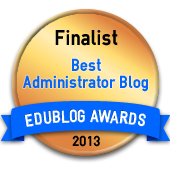Blog Archives
Kindergarten Engineers (Video)

Recently, one of our kindergarten classes worked on a standards-based engineering challenge, and the results were incredible. The truth of the matter is this type of “incredible” is something I see on a daily basis in classrooms across our school. Sometimes I’m able to take a few pictures (or video) and other times I simply stand in awe of the passion and skill our teachers possess. I am amazed at how our team cultivates skills that help students thrive today and excel tomorrow.
When all is said and done, the transmission of graphite to paper provides important practice and achievement data. However, it’s the transmission of curiosity that transcends time. Learning how to learn, overcoming failure, and working together to create something more beautiful than any of us could create alone is where the magic is. When digital age skills and a relevant pedagogy are part of the achievement process kids win.
This three minute VIDEO highlights the process we used for a lesson with Edison robots. Getting a glimpse of the conversation and steps our kindergarten students followed is pretty special. I also think that sharing some of the activities that our teachers are facilitating is good for all kids. When educators share their insights a global ecosystem of learners benefits from the ensuing conversations. Shining the light on best practices, innovation, and the work our dedicated teachers are doing helps us all understand how we might serve students in a more relevant and relational manner. It’s not about the robots!
Edison robots are the tool featured in this video, but they are not the reason this learning experience was incredible. The mindset and approach that Mrs. Amy Westman used made this learning transformational for kids. (A connected teacher with a growth-mindset is more important than any robotic device.) Amy and her colleagues demonstrate this on a daily basis. I’d suggest following @MrsAmyWestman on Twitter. She’s one of seven phenomenal kindergarten teachers in our school, and she shares some great learning highlights throughout the week.
Standards and Mobile MakerSpaces:
Lastly, one of the kindergarten standards that guided the lesson was 0.8.1.1 1. “Prepare for and participate effectively in a range of conversations and collaborations with diverse partners, building on others’ ideas and expressing their own clearly and persuasively.” We used one of our Mobile MakerSpace carts to bring this challenge to students, and to breathe relevance into the standards.
Within Reach

The teacher-observation process provides me access and insight into classroom learning experiences that very few people have. I’m consistently inspired by the relevant and connected learning I observe. Recently I was in a classroom and I didn’t want the lesson to end. As I was watching the lesson unfold, I knew that what I was experiencing was also within reach of classrooms and schools everywhere.
Here are some of the salient things I observed during the lesson:
- I observed an elementary Language Arts lesson.
- A clear learning target based upon state standards guided the learning process.
- The teacher used one of our Mobile MakerSpace carts to teach students how to create an alternate ending to a text by manipulating various elements of the plot.
- Students constructed models depicting their alternate story endings using Lego building bricks from the MakerSpace cart.
- Students were empowered to collaborate on plans for their alternate story endings and projects.
- Students had opportunities to talk, create, experiment, fail, and redesign.
- The teacher purposefully connected with individual students and small groups to elicit high-level thinking and scaffold as appropriate.
- Formative assessment was seamlessly interwoven through the lesson.
- Students presented their creations to the class near the conclusion of the lesson. This public speaking provided students time to explain their thinking, and the teacher was able to use some metacognition connected to the learning target.
- Students used digital tools to curate their work so it could be referenced in the future and shared with parents.
- As part of this process, students photographed their projects and uploaded them to Google Drive to share their learning with their families.
- Students did not want the lesson to end. (Based on what I was seeing, kids would’ve opted to skip recess if given the opportunity.)
- The teacher ensured that the lesson was led by learning; not tools, technology, or activities.
- This was an authentic learning experience that was scholarly and highly relational.
Did I mention that this was a kindergarten language arts lesson?! That’s right…our youngest learners were empowered to innovate, collaborate, present, and curate their work using digital tools.
At one point one of the kindergarteners yelled out in exuberence, “Teacher…we’re engineering!” and her amazing teacher responded, “Yes…you are designing and building.” Kids were making connections to past conversations about design, building, and engineering.
During our observation post-conference I invited the teacher to share her reflections in a blog post instead of the traditional electronic form required by the district. I knew that we could meet the requirements of the standard district form by copy/pasting reflections from a blog post if the teacher was interested in pursuing this. (Stay tuned for her reflections and first blog post…)
I am convinced that a paradigm shift is underway in education because I see it every day at Greenwood Elementary. A new and connected learning paradigm that puts students in the center of their learning is possible. Deeper learning that’s both relevant and connected is within reach!

Image Credits:
1.) “Sparkler” photo from Pixabay (Creative Commons)
2.) “Kindergarten Collaboration & Digital Curation” photo from Greenwood Elementary
Pedagogy First (video)
Our kids are counting on us to lead learning with a relevant and connected pedagogy. The approach we use is critical to students’ long-term success. In order to put kids first we’ve got to change the narrative. We’ve got to prioritize pedagogy…NOT apps or devices.
In order to do this we must begin by asking better questions:
“How might we provide students an authentic audience for their work?”
“In what ways can we tap into Social Media as Learning Media?”
“How can we infuse student voice and innovation into the Common Core State Standards?”
“What is the best thing that could happen if we embrace a more connected approach to teaching and learning?”
“What traditions and educational staples (pun intended) do we need to STOP doing?”
It’s time to get serious about pedagogy. Teaching the YouTube Generation without providing safe and scaffolded opportunities for students to contribute to YouTube is absurd. We’ve got to connect kids to authentic learning experiences that are congruent with the collaborative world they live in. Click HERE to view a three minute video highlighting some of the ways our team is connecting students to their world.
Mobile MakerSpaces in Action (Video)
The entire concept is really quite simple. The Mobile MakerSpace carts that line the hallway leading into our Media Center are capable of transporting new opportunities and tools to virtually any space in our school. Whether it’s high-tech 3D printing and modular robotics or low-tech knitting and plastic construction blocks…the carts contain tools that elicit collaboration and unleash student creativity.
When coupled with our amazing team of teachers the impact is quite profound.
Our teachers continue to integrate collaboration, creativity, and ‘making’ into the student learning experience in a variety of ways. In addition to our Mobile MakerSpace Fleet, new instructional approaches like Genius Hour, flipped instruction, connected learning, and math workshop contribute to a relevant pedagogy. Best practices in literacy instruction, assessment, and classroom discussions further contribute to meaningful learning experiences. Staff are engaged in a variety of passions that contribute to a culture of learning and innovative school ethos.
The time, energy, and learning that our team invests into reinventing themselves for kids each year is nothing short of inspiring.
We continue to expand upon student opportunities based on input from our students and staff. This year we’re adding another five or six carts that students will have access to. Be sure to watch the short video in this blog post to see how our Mobile MakerSpaces work.
Finally, stay tuned for a unique opportunity for YOUR students to design and propose our next Mobile MakerSpace cart! It’s going to be AWESOME!
3 Questions I Hope my Children’s Teachers are Asking
I often reflect upon how to empower students to learn at a high level while navigating the digitally-connected landscape we find ourselves in. I ask questions and strive to serve our students better today than I did yesterday.
In addition to being a principal I’m also dad to three pretty spectacular kids. My wife and I pray our children grow up to be loving people with humble hearts and curious minds. We also understand that their world is different than ours was, so we think about other important things too. My hope is that my children’s teachers are reflecting on some of the same questions I ask myself.
3 Questions I Hope my Children’s Teachers Are Asking
- How might I model digital leadership for my students?
- How might I help my students express their ideas in powerfully creative and appropriate ways using social media?
- How might I leverage the transformative power of technology to fuel collaborative conversations between students about their learning?
For the past couple years I’ve collaborated with Tony Sinanis and John Fritzky (principals in New York and New Jersey) to create cross-state collaborative podcasts. The podcasts feature our students sharing their favorite books, vision for education, and other creative endeavors led by kids.
This year we are adding an interactive Twitter-based chat to the collaboration. We’d like to invite you to join us as we strive to model how to leverage technology as a tool to connect, inspire, and amplify student voice.
The four chat dates for the 2015-2016 school year are below, and we’re planning to share out a student-created podcast prior to each chat. Please join us and include your classroom or school in the conversation. We’ll be using the hashtag #StuConnect on Twitter starting at 9:30am CST on the dates below.
#StuConnect Chat Dates
October 8, 2015
December 1, 2015
January 15, 2016
March 10, 2016
NAESP National Panel on Innovation
We’ve got an NAESP National Panel planned with some spectacular surprises. Join us for a conversation about innovation and connectivity in education. To get to know the presenters before the conference, simply click on the image above or download the DAQRI augmented reality app on a mobile device. (Just hover over the flyer while in the DAQRI app to launch into a 4D experience!)
Date: Wednesday, July 1, 2015
Time: 2:00pm – 3:15pm
Location: Long Beach Convention Center, Room 201B
Presenters Include:
Can’t travel to NAESP in Long Beach? Watch for a Periscope link via Twitter to join us virtually!
And One
In basketball, you might hear a player yell the phrase, “And one” after somebody is fouled attempting to make a basket. If a player makes the basket in the process of being fouled, the referee can award an additional shot attempt. In other words, “And one” can be unexpectedly awesome because it means that a player made a basket and gets the chance to score again.
Life is full of “And one” opportunities, but you have to be purposeful in creating them.
University teacher preparation programs play a significant role in education. Earlier this year, our school welcomed a busload of more than 20 future educators. The undergrads were taking their first education class. Our goal in engaging with the university and undergraduate students at such an early stage of their preparation was simple; we wanted to provide an authentic glimpse into the 21st century student learning experience in a way that no single semester-long technology class ever could.
Our students will be better served if we are more intentional about formal & informal induction processes.
Teacher preparation programs must interact with the mind-blowing possibilities that a relevant and connected pedagogy represent. Technology can be a transformational tool and future educators should be made aware of this expectation early in their studies. The moment we pigeonhole technology to an app or electronic worksheet we limit student potential. We need to shine the light on current best-practice! Hence, our “And one” moment was born.
After the busload of future educators arrived, we started our day by convening in our media center to review the rotations we’d set-up in advance. Flanked by a few of our Mobile MakerSpace carts we conversed about pedagogy and discussed important “look fors” prior to visiting classrooms. Then, we initiated some rotations that provided university students a variety of opportunities to observe what our teachers were doing to cultivate skills like communication, collaboration, critical thinking, and creativity. Towards the end of the visit we reconvened to reflect on the rotations and discuss important questions. The entire experience was an “And one” moment for me.
When we invest in the capacity of others we’re not only living in the moment, but we’re adding value to tomorrow’s generation of learners.
I knew that the 20 or more future teachers on that bus would be profoundly impacted by seeing the inspiring everyday work occurring in our classrooms, but I didn’t expect to be so deeply moved by the experience myself. I am convinced that schools need to be more actively engaged with universities and teacher preparation programs if we are to collectively rise to the challenges we face together.
What’s an “And one” moment you experienced this school year? What was unexpectedly awesome and how did you make a difference for kids?
I challenge you to respond by sharing your #AndOneMoment. Then tag two additional educators you respect to add to the conversation!
EduDrone Challenge
You might be surprised to learn that your school can purchase a drone for less than $50 dollars! If you’re interested in connecting with other schools that are cultivating critical thinking and creativity using these cutting-edge “quadcopters” this is the blog post for you! Welcome to the “EduDrone Challenge!”
Here’s how it works: Teams of students create a Challenge Course for their drone to maneuver through. Each Challenge Course should feature 4-8 mini-challenges for drones to navigate. Students need to create detailed plans that are drawn to scale, and use precise mathematical terms so that schools across the country can replicate the same Challenge Course design. (Please read the academic standards information below for explicit learning objectives.)
After a team of students has created their Challenge Course plans, they should select a creative theme and write a narrative that describes the Challenge Course in imaginative terms. For example, students that incorporate a hula-hoop as one mini-challenge could describe the hoop as “a black hole that the Drone must jettison through in a distant galaxy.” (Please read the Common Core writing standards below for explicit learning objectives.)
Directions:
- Brainstorm objects for your Challenge Course (i.e. cones, hula-hoops, etc.).
- Develop a detailed plan using graph paper or drawing paper. Click HERE to see a sample plan.
- Be sure to include measurements and the appropriate mathematical terms.
- Select a creative theme and write a narrative describing your team’s Challenge Course.
- Practice navigating your Challenge Course and make adjustments to your detailed plan or narrative as needed.
- Share your classroom or team’s detailed plan and written narrative with other schools. Use the #EduDroneChallenge hashtag on Twitter.
- Try to recreate Challenge Courses from other schools using the detailed plans they create and share.
We will be posting plans and video that our students create in the coming weeks and look forward to connecting with other schools.
Academic Standards Information:
- I can understand fractions in real-world situations by creating a detailed plan for a drone Challenge Course using fractions/percentages, and successfully building the Challenge Course. (Math: Number/Operation 3.1.3.1)
- I can draw a representation of a three dimensional figure, and create an authentic drone Challenge Course that utilizes the same measurements and points represented by my drawing. Each mini-challenge in my Challenge Course represents one vertex or point in the 3D object. (Math: Geometry & Measurement 5.3.1.1)
- I can write a narrative to develop a real or imagined experience using effective technique, well-chosen details, and well-structured event sequences. (Writing: Common Core College & Career Readiness Anchor Standard for Writing)
- I can use technology resources for problem solving, self-directed learning, and extended learning activities. (ISTE Nets & WPS Technology Standards 5, 6)
- I can reflect on and adapt to the ever-changing nature of technology and understand how and why technology works. (WPS Technology Standards C & D)
Additional Resources:
Watch this TED Talk to see the science of drones!
Our school started by purchasing a Parrot AR Drone for about $300, but we are also investing in durable mini-drones for much less.
Connect with @GWtechWPS or @GustafsonBrad with questions!
